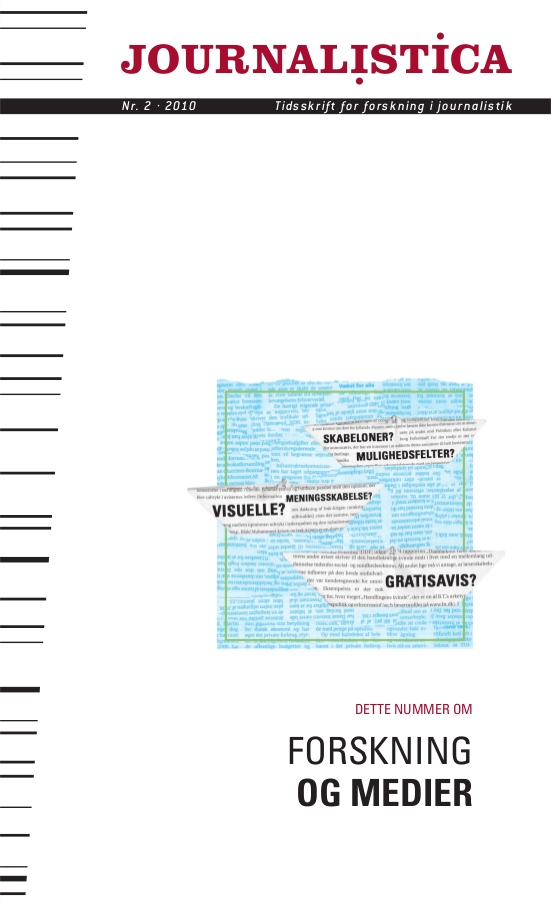Capturing meaning-making in journalism
DOI:
https://doi.org/10.7146/journalistica.v4i2.2676Abstract
Performing content analysis is not merely a question of developing and using quantitatively-defined categories in order to investigate a research problem. If you want to go further and look at the meaning of the whole text, your analysis will meet challenges that go beyond numerical classification and coding. The strict numerical procedures of quantifying, classifying and counting often have the advantage of objective control and reliability within research communities. However, they tend not to capture the ways meaning is produced, communicated and understood.
In this article we outline a dual procedure for the analysis of meaning-making in journalism. Using the software NVivo 8 we combine a qualitative and quantitative approach to the analysis of news texts. Following Franzosi (2010) we move “from words to numbers” and develop a methodological framework that supports investigation of the ways different cultural context, political reality and journalism culture generate narrative differences and produce alternative meanings. Our method consists of eight steps: 1) close reading of the text to identify the central organizing ideas of the story; 2) defining, naming and classifying these ideas as dominant story frames; 3) identifying variations within each frame; 4) defining, naming and classifying variations of frames as dominant story angles; 5) coding of news texts to identify frames and angles; 6) using NVivo to identify the frequency of the frames and angles appearance; 7) using NVivo to identify patterns of use in comparative perspective; 8) interpreting data in the light of social and institutional context.
We use the case study of the two year long newspaper coverage of the Tasmanian devils sent as a birthday gift to Danish Prince Christian to locate the process of meaning-making. Our analysis shows that the reconstruction of an event – a ’real story‘ – generates one or more story frames, which are related to the newsworthiness of the event, shared and hunted down by all journalists regardless of the country of origin or newspaper format. We found that journalists acted differently when refining frames into angles where the choice of angles relates to a specific national and media format setting.
The main advantage of this applied method is the precision in identifying the journalistic tools used to produce a specific meaning.
Downloads
Published
How to Cite
Issue
Section
License
Forfattere, der publicerer deres værker via dette tidsskrift, accepterer følgende vilkår:
- Forfattere bevarer deres ophavsret og giver tidsskriftet ret til første publicering, samtidigt med at værket er omfattet af en Creative Commons Attribution-licens, der giver andre ret til at dele værket med en anerkendelse af værkets forfatter og første publicering i nærværende tidsskrift.
- Forfattere kan indgå flere separate kontraktlige aftaler om ikke-eksklusiv distribution af tidsskriftets publicerede version af værket (f.eks. sende det til et institutionslager eller udgive det i en bog), med en anerkendelse af værkets første publicering i nærværende tidsskrift.
- Forfattere har ret til og opfordres til at publicere deres værker online (f.eks. i institutionslagre eller på deres websted) forud for og under manuskriptprocessen, da dette kan føre til produktive udvekslinger, samt tidligere og større citater fra publicerede værker (se The Effect of Open Access).




